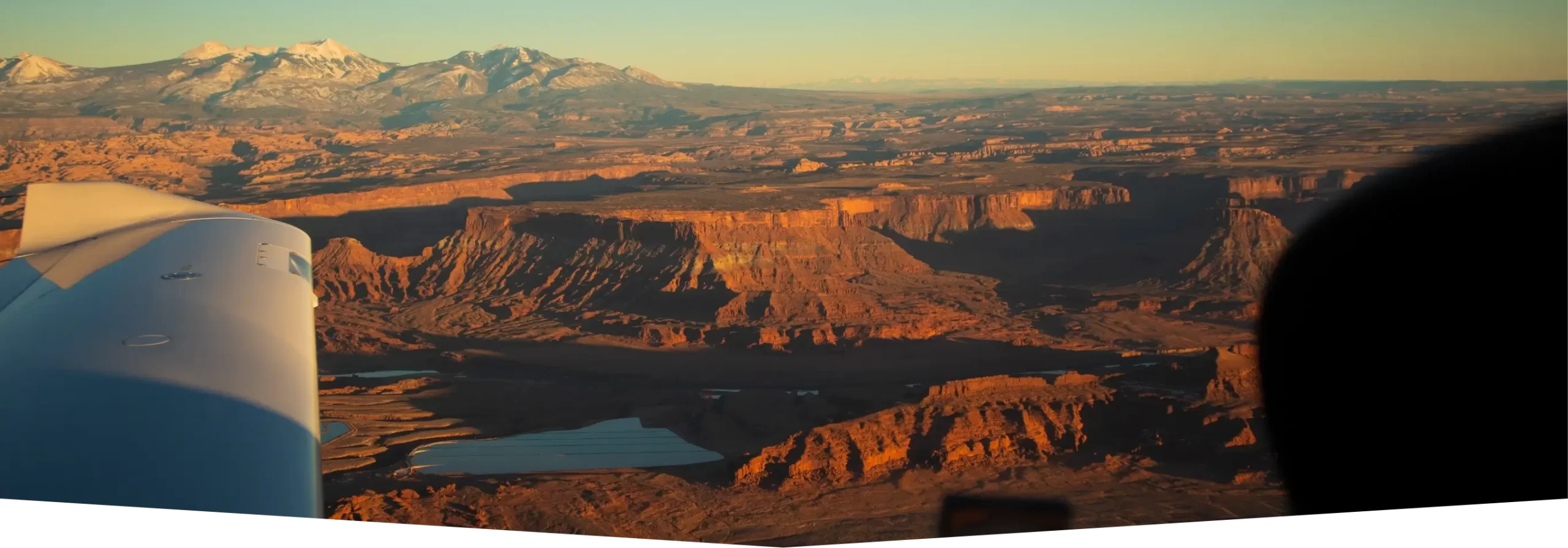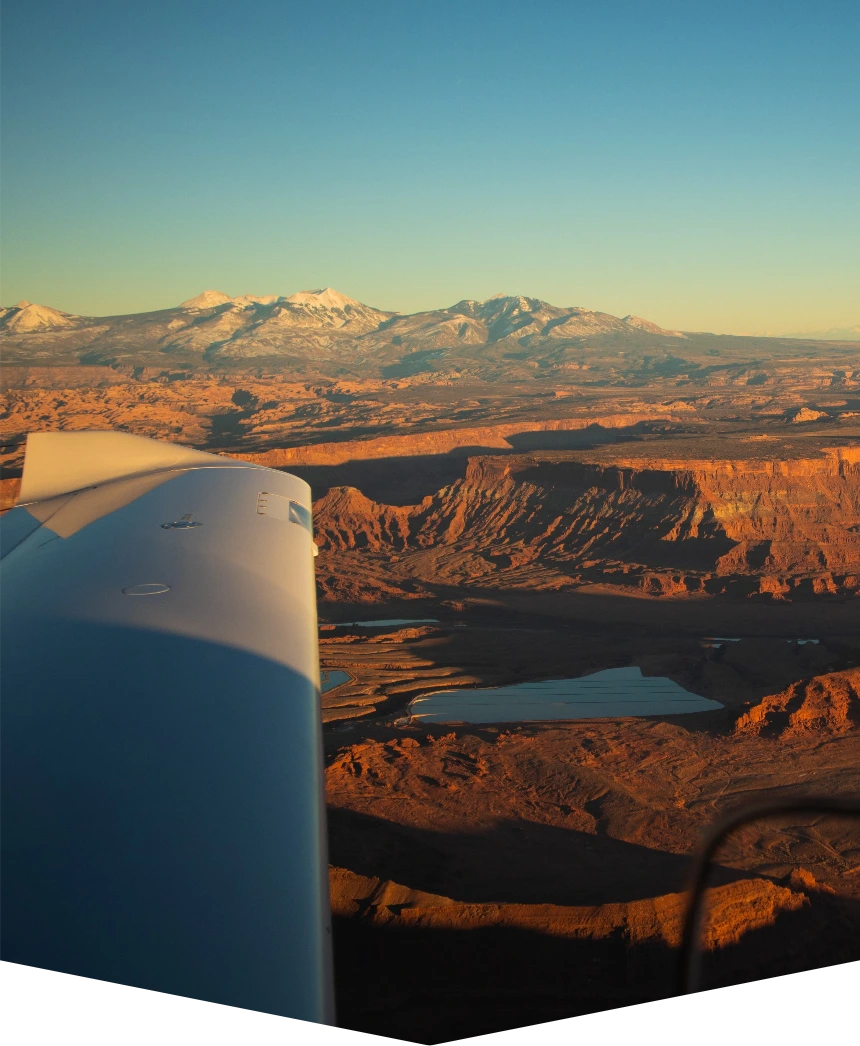- You have items in your cart!
The Real Cost of Flight Training: FLT Academy vs. Other Schools
At FLT Academy, we know prospective pilots are doing their homework; comparing schools, crunching numbers, and trying to figure out what it’s really going to cost to become a professional pilot. So we did the math for you, using real-world data from our students and comparing it directly with average rates from other flight schools along the Wasatch Front.
We looked at what students actually spend, not based on the minimums in the FARs, but on what it truly takes to complete each certificate or rating in a realistic training environment. Things like weather delays, scheduling, and maintaining proficiency while waiting for checkrides are all accounted for. We based our flight time and instruction estimates on the most common number of hours seen across hundreds of students over the past several years.
Realistic Training Hours per Certificate or Rating
1. Private Pilot Certificate
- 52 hours of dual training (instructor on board)
- 5 hours solo flying
- 1.5 hours for the checkride/End of Course (EOC) Evaluation
- 2 hours flight simulator
- 12 hours pre/post-flight briefing/debriefing
- 25 hours 1-on-1 ground time with instructor
2. Instrument Rating
- 45 hours of dual training (instructor on board)
- 0 hours solo flying
- 1.5 hours for the checkride/End of Course (EOC) Evaluation
- 15 hours flight simulator
- 7.5 hours pre/post-flight briefing/debriefing
- 20 hours 1-on-1 ground time with instructor
3. Commercial Pilot Certificate
- 55 hours of dual training (instructor on board)
- 65 hours solo flying (time building)
- 1.5 hours for the checkride/End of Course (EOC) Evaluation
- 4.5 hours flight simulator
- 17 hours pre/post-flight briefing/debriefing
- 18 hours 1-on-1 ground time with instructor
4. Commercial Multi-Engine Add-On
- 10 hours of dual training (instructor on board)
- 0 hours solo flying
- 1.5 hours for the checkride/End of Course (EOC) Evaluation
- 2 hours flight simulator
- 7 hours pre/post-flight briefing/debriefing
- 6 hours 1-on-1 ground time with instructor
5. Certified Flight Instructor
- 25 hours of dual training (instructor on board)
- 0 hours solo flying
- 1.5 hours for the checkride/End of Course (EOC) Evaluation
- 0 hours flight simulator
- 9 hours pre/post-flight briefing/debriefing
- 15 hours 1-on-1 ground time with instructor
Resources
What This Means For You
Using those numbers, and factoring in aircraft rental, instructor time, and essential training expenses like an iPad, aviation headset, ForeFlight subscription, FAA knowledge tests, and checkride fees – the estimated cost to complete your training from Private Pilot through Certified Flight Instructor at FLT Academy comes out to $98,277.20. The same training, using average rates* from other schools in the area, comes out to $94,323.70**. That’s only a difference of about $3,900.
We know FLT Academy isn’t the cheapest flight school around, but we’re confident it’s the best value. Here’s why:
-
Examining Authority. One of the biggest hidden costs in flight training is the extra time and money spent flying after you’ve finished your training, just waiting for a DPE (Designated Pilot Examiner). FLT Academy has FAA Examining Authority, allowing us to conduct pilot evaluations in-house for Private Pilot, Instrument Rating, and Commercial Pilot. Our students get tested and certified faster, without waiting weeks or months for a DPE.
-
Utah’s largest fleet. We operate the largest fleet of training aircraft in Utah, with over 60 aircraft and more on the way. That translates to better aircraft availability, fewer cancellations, and more opportunities to fly consistently, which ultimately keeps you on track and on budget.
-
In person ground schools. Instead of watching 30+ hours of outdated online lessons, you’ll learn in a classroom environment with instructors who help you truly understand the material. While enrolled in ground school, 1-on-1 tutoring is completely free, whether you need 10 minutes or 10 hours, we are always here to help you.
-
On-site maintenance team. All of our aircraft are maintained by FLT-employed technicians in our own hangars. Schools that rely on third-party mechanics often experience long delays when their aircraft need inspections or repairs. Our in-house team ensures our planes are safe, legal, and ready to fly, keeping your training moving without interruption
-
Modern aircraft fleet. FLT’s training fleet features modern-era aircraft like the Sport Cruiser, Diamond DA20, and Diamond DA40. These aircraft are equipped with digital avionics, autopilot, and safety features that better prepare you for the technology used in today’s airline and corporate flight decks. You won’t be logging hours in a 50-year-old trainer with outdated analog gauges. You’ll be learning in the kind of aircraft that employers expect you to be familiar with.
-
Direct airline partnership. Unlike many schools that promote cadet programs as little more than applications you submit once qualified, FLT Academy students are accepted into the SkyWest Pilot Pathway Program on day one. This means early seniority, mentorship, and a real head start toward a career with a respected regional airline and, ultimately, a major carrier.
When you add it all up, the difference is clear. FLT Academy may cost a bit more on paper, but that investment pays for itself through faster progress, better resources, fewer delays, and stronger career outcomes. And with new lending partnerships on the horizon, there’s never been a better time to get started.
If you’re serious about becoming a professional pilot – and doing it the right way – train with the team that’s committed to your long-term success. We’re not just here to help you earn certificates. We’re here to help you launch your career.
* Average rates used for comparison were $175 per hour for aircraft rental and $65 per hour for instructor time. These figures were collected from publicly available pricing listed on other flight schools’ websites. Rates may vary by location and are subject to change at any time. Prospective students are encouraged to conduct a direct cost comparison using realistic training hour estimates specific to each school they are considering.
** FLT Academy operates under FAR Part 141, which allows eligible students to complete their commercial pilot certificate with as few as 190 total flight hours. In contrast, most other flight schools operate under Part 61, which requires a minimum of 250 total flight hours for the same certification. For accuracy, all cost comparisons with other schools have been adjusted to reflect the additional flight hours required under Part 61.
TESTIMONIALS
Trustindex verifies that the original source of the review is Google. I really love the structure and support that FLT Academy offers. Great program and great staff.Trustindex verifies that the original source of the review is Google. I took it as a refresher with my student pilot son . I've been flying about 54 years and it was well worth it.Trustindex verifies that the original source of the review is Google. Great peopleTrustindex verifies that the original source of the review is Google. You won’t find a better place to get your training! Everyone at FLT has been extremely professional and have been as motivated as I am to complete every stage. I was one of the people that has been interested in aviation my whole life and just never took the plunge to do it. Take my word that making that leap with FLT Academy was the best decision I’ve made! My only regret was not doing it 10 years ago. But thanks to FLT I will have a long and enjoyable career doing what I love! I promise you won’t be disappointed!Trustindex verifies that the original source of the review is Google. My personal experience with FLT Academy so far has been beyond amazing. I just want to point out how careful and thorough these guys are. I had my FLT orientation class today and it is amazing to see how much care and planning went into just this, and to have the opportunity to meet with Jason (CEO) and meet his incredible staff. I have heard rumors that FLT is the best of the best and from what I have seen so far, I believe that to be true.Trustindex verifies that the original source of the review is Google. I’ve been working with Joseph. He’s been very helpful and is always available to answer my questions and provide guidance.Trustindex verifies that the original source of the review is Google. I won't be a student for 3 or so years. So I went in to see what they had to offer and for some general advice on a career path. They were extremely helpful and experienced. I will be going here in the future.Trustindex verifies that the original source of the review is Google. So far it’s been pretty good! They are organized and so kind here! They really want to help you succeed and will give you the help you need!
GET IN TOUCH WITH AN ADVISOR TODAY
Contact Form
"*" indicates required fields

